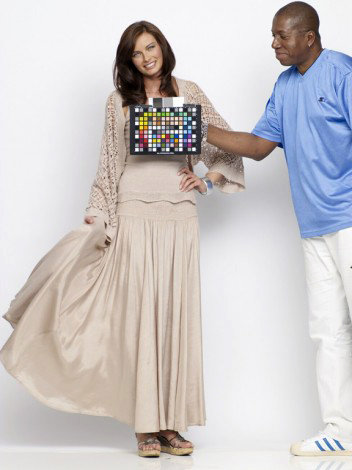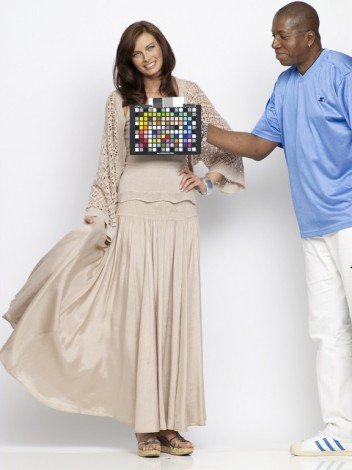-
Posts
12 -
Joined
-
Last visited
Everything posted by Von Thomas
-
I notice if you manually reset, and don't get it right (joystick not positioned properly) it will throw off the roll #. Start of day, System->Media->Reset-.Reel#-> (start with "1") Next card or drive, System->Media->Format->(you should automatically be set to 2) Always check after format on LCD/Rear Screen/EVF, to see if your roll is correct.
-
In the past tens years I've been involved in digital capture, I've heard my position as digital tech on a still shoot could be done by a photo assistant, or the clients office assistant. True the duplication process is not rocket science, but you have to know there is a rocket, and that rocket might malfunction, and if/when it does, who's going to fix it? A good DIT, RED Tech will be able to troubleshoot to the extent, no one every knows there was a problem in the first place. So, don't downplay that position. That position is handling (protecting) everything you are on set for days or weeks to capture. If they screw up because you though a PA could do it, how much money will they have cost the production? Nobody likes to pay insurance either. People get lucky on shoots everyday not having a DIT, just as there as uninsured motorist driving every day, one day, luck will run out. Von
-
Better to take your still from the RAW and not the proxy, you will have a far better file. Do it in REDAlert, it's too easy.
-
One thing I've noticed in quite a few RED finished project are the whites being blown totally out. I watched a guys reel the other day, and I thought it looked terrible. If you have a black man in a white tee shirt, the tee shirt would be out, anything white would be out. Who is teaching these people how to light? Coming from a still background, I could not turn in a project like that, I'd never have a client again. I think taking the care to light properly is a must. I want to do a test on RED in studio with HMI's, white cyc, model in white dress, and have everything beautiful, we do it all the time in digital still. The photo below, I have on white pants, there is detail, not blown.
-
Go G-Tech, they use server quality drives, and have a good warranty. Of all drives I've used over the years, and I've been through hundreds, G-Tech is the safest for the money.
-
While the spot meter is a good tool, the histogram is the best way to expose, it's a graph of all your digital info, highlight to shadow.
-
That is a QP Card. They manufacture them to be identical, so you are consistently working with the same value. I also use a DSC Labs gray scale, thing is I only need gray, never use anything else (but the white and black are useful reference), and if you check my site, http://digitaltechnyc.com, every shot for every client was done that way. In the 8Bit RGB workflow the middle gray should be 127, 127, 127, I know I have a neutral image. Also white would be 247 to 250, I know I'm not clipping, black 15 to 30, I still have detail.
-

Want to rent event lighting in New York area
Von Thomas replied to XiaoSu Han's topic in Lighting for Film & Video
Do know how reasonable they are, but, http://www.musco.com/temporary.html -
To some of you guys I'm relatively new to motion, but I have over ten years working with digital files in still photography. While you can shoot both (still and motion) without the use of a gray card, the time saved, with the color neutrality dialed in, in an instant is not worth the fuss if you don't shoot one. It's way to easy to take time to do this. Now it's not the normal workflow for film, but this is digital, and digital is different. I can have your clips going to post without color cast, all day long. Every editor I've worked with only has praises and smiles on their faces. Now I'm not talking about making a color look decision, just getting to "0". Color neutral, meaning skins tones look right, the scene looks right, now where you go from there is your creative decision, your touch, but this time, you start from what looks normal. Gray Card, absolutely, its a digital photographers best friend. Every professional (advertising, fashion, catalog, editorial) digital shoot done by professional capture firms use this daily, if not, they would spend more time, and money in post. This has been the norm from day one in digital still. RED is a digital still camera, that shoots motion.
-
RED Digital Cinema qualified Technician. Over 10 years in digital capture, 20 years still photography and lighting. Experienced with RED prep, setup, and workflow. Von Thomas 213 258.5274 www.digitaltechnyc.com www.vonthomas.com http://gallery.me.com/vonthomas
-

Camera Assistant Tape Measures?
Von Thomas replied to Ravi Kiran's topic in Camera Assistant / DIT & Gear
Thanks, I've been searching their website, but so far no PD 42, maybe I'll just have to go in a local store. -
I don't hear many of you using the most valuable exposure tool for RED, it's histogram. I come from years in the digital still world, where I really don't need a meter, just for quick reference. If you really learn and rely on the histogram, your images will work for you every time. I remember my first histogram, did not understand it, then over the years it became my most valuable tool. Add to that the false color tool and bingo, your in good exposure territory. Jim Jannard has a thread on RED User called Exposure 101, you should check it out. Also shoot a gray card in key light near talent, later use as white balance reference to neutralize your image in RED Alert, this will save you time and money in post, and it's a simple process, takes seconds. Do this with every lighting change, and you will have trimmed hours off post. REDucation's first training series starts next Monday July 20, it is the first all inclusive all immersive RED authorized training, and I'm gonna be there. I suggest for those shooting with RED, consider attending the next REDucation which starts in September. It should answer most all of your questions
-

Camera Assistant Tape Measures?
Von Thomas replied to Ravi Kiran's topic in Camera Assistant / DIT & Gear
Where can I purchase a Hilti PD 42 in Los Angeles?




